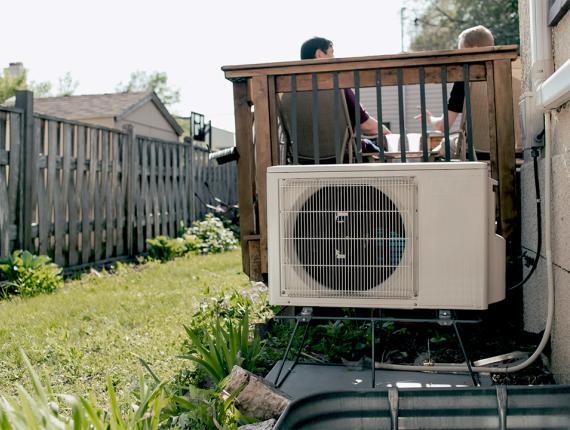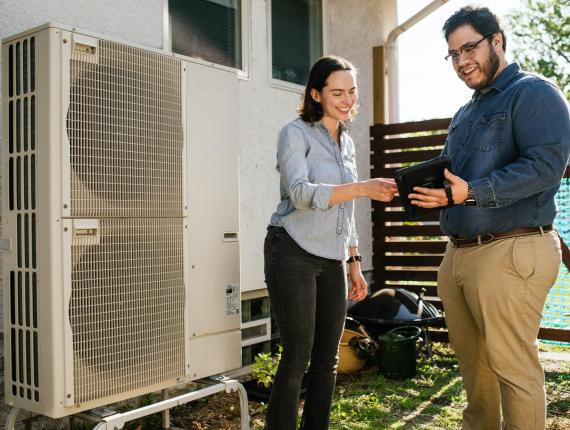
What is an air source heat pump?
Air source heat pumps (ASHPs) are a high-efficiency technology with the potential to improve heating and cooling while reducing energy costs. ASHPs work by transferring (or pumping) energy between the outdoors and the inside of a home.
Unlike ACs, ASHPs can operate in reverse to effectively cool and heat a home, moving rather than creating heat. The energy to move the heat is less than the amount of heat that the refrigerant cycle delivers, resulting in more efficient residential heating systems.
Benefits of heat pumps
This initiative has the potential to reduce Minnesota’s residential heating and cooling load by roughly 35%. Currently, an estimated two-thirds of single-family Minnesotan households are heated with gas furnaces and cooled with AC. These households could instead meet a portion of their home heating needs and all cooling needs by replacing their ACs with ASHPs. By moving heat instead of creating it, ASHPs used for space heating are 200% to 400% more efficient, cutting emissions in support of Minnesota’s transition to a carbon-free grid by 2040.
As the technology has advanced in recent years, ASHPs have emerged as an even higher-efficiency option for heating and cooling residences in all climates.
Why we’re working to advance the adoption of air source heat pumps
Despite the energy and emissions savings potential, ASHPs face many barriers to widespread market adoption, including lack of customer awareness and contractor hesitancy to recommend and install the product, as well as higher upfront costs. However, there are also several opportunities to increase the technology’s prevalence thanks to robust utility and state incentives, highly engaged manufacturer and distribution networks, and increasingly widespread motivation to reduce greenhouse gas emissions. Ultimately, this initiative aims to enable ASHP technologies to become the new normal through adoption of a state or federal code or standards update.

